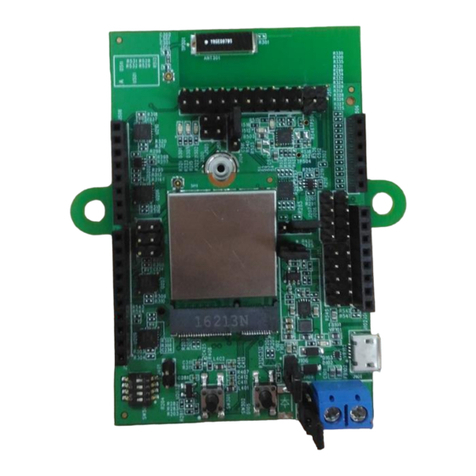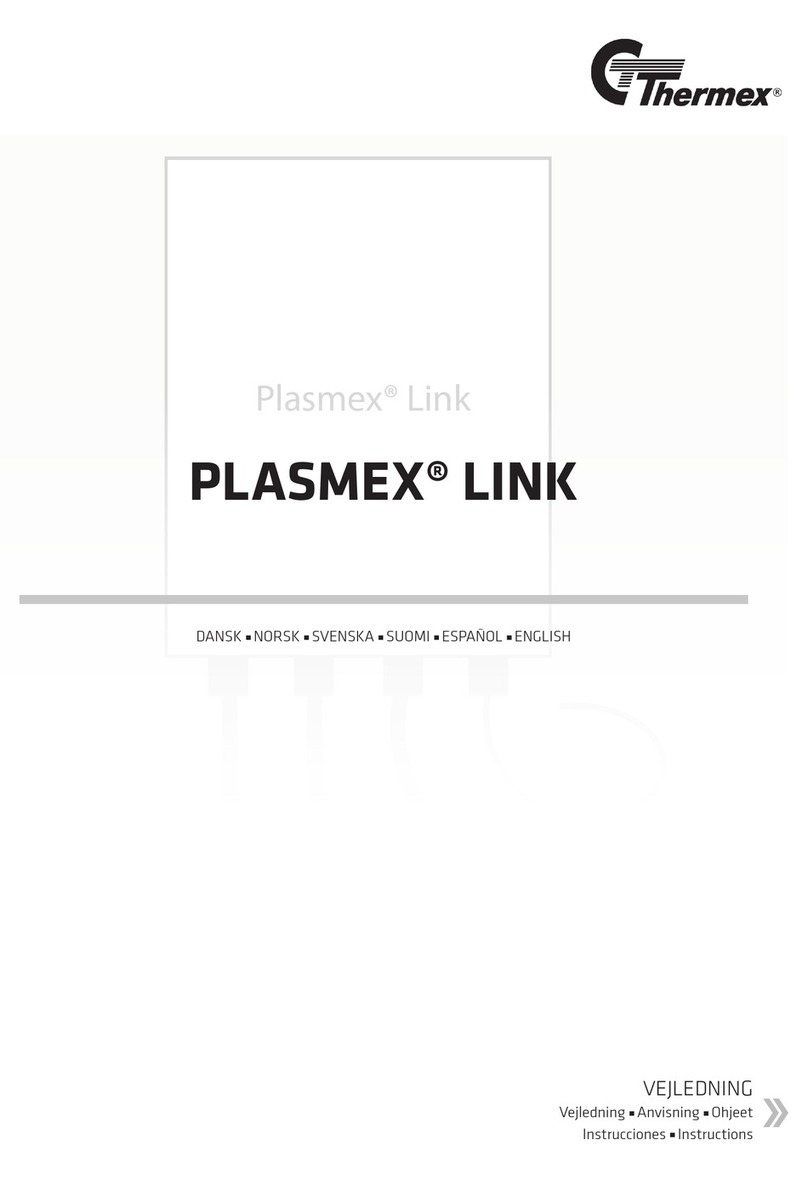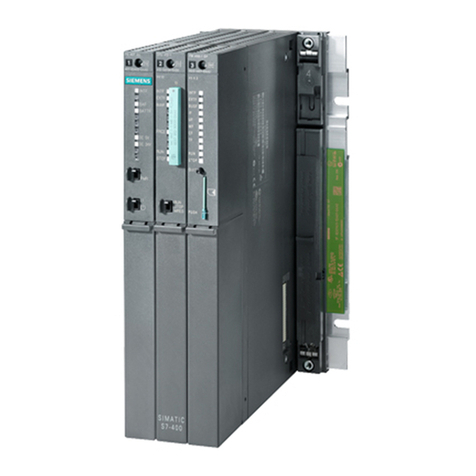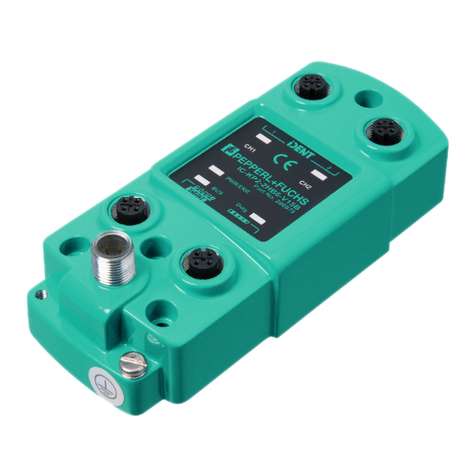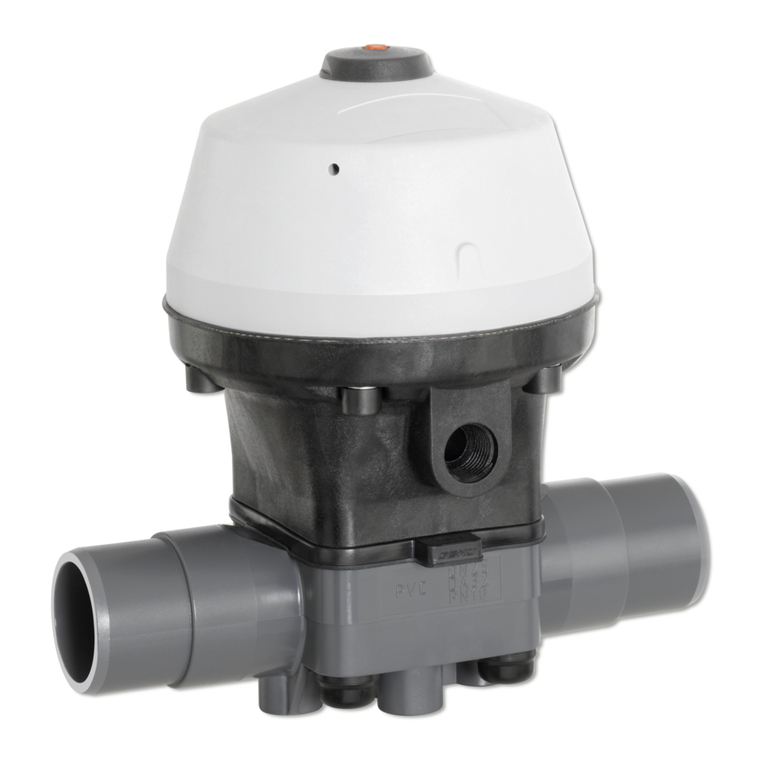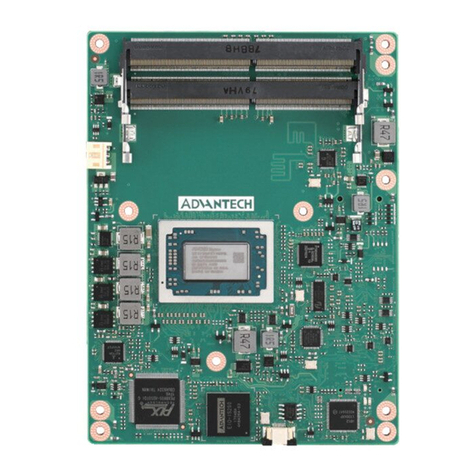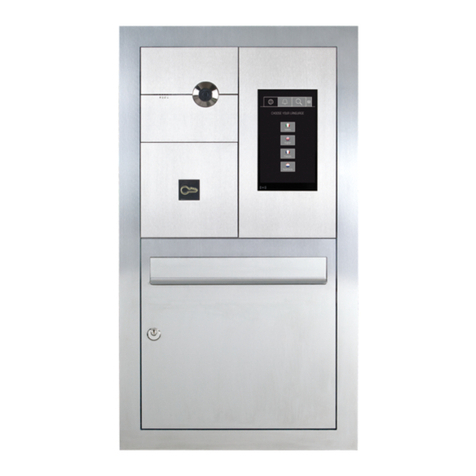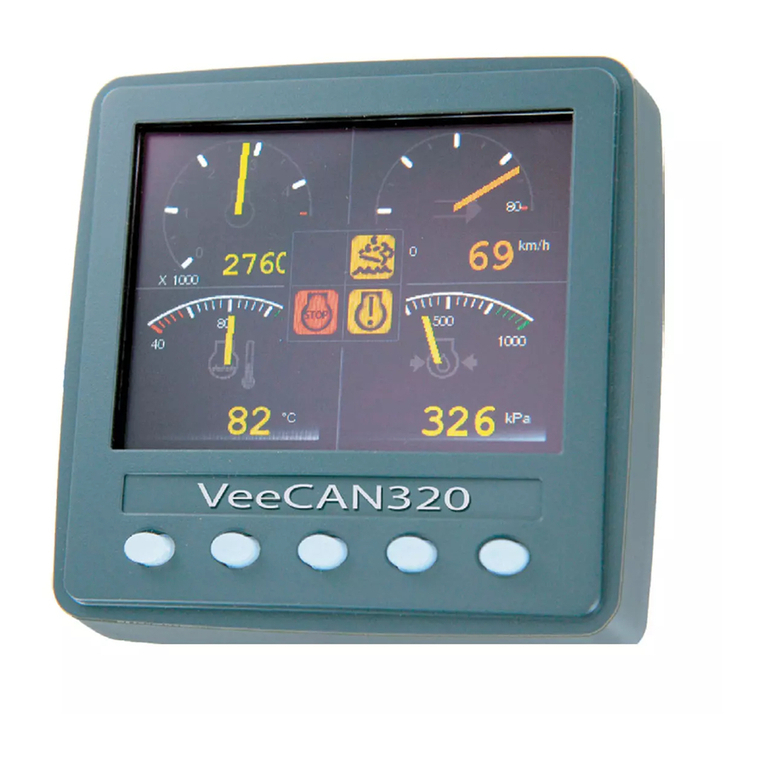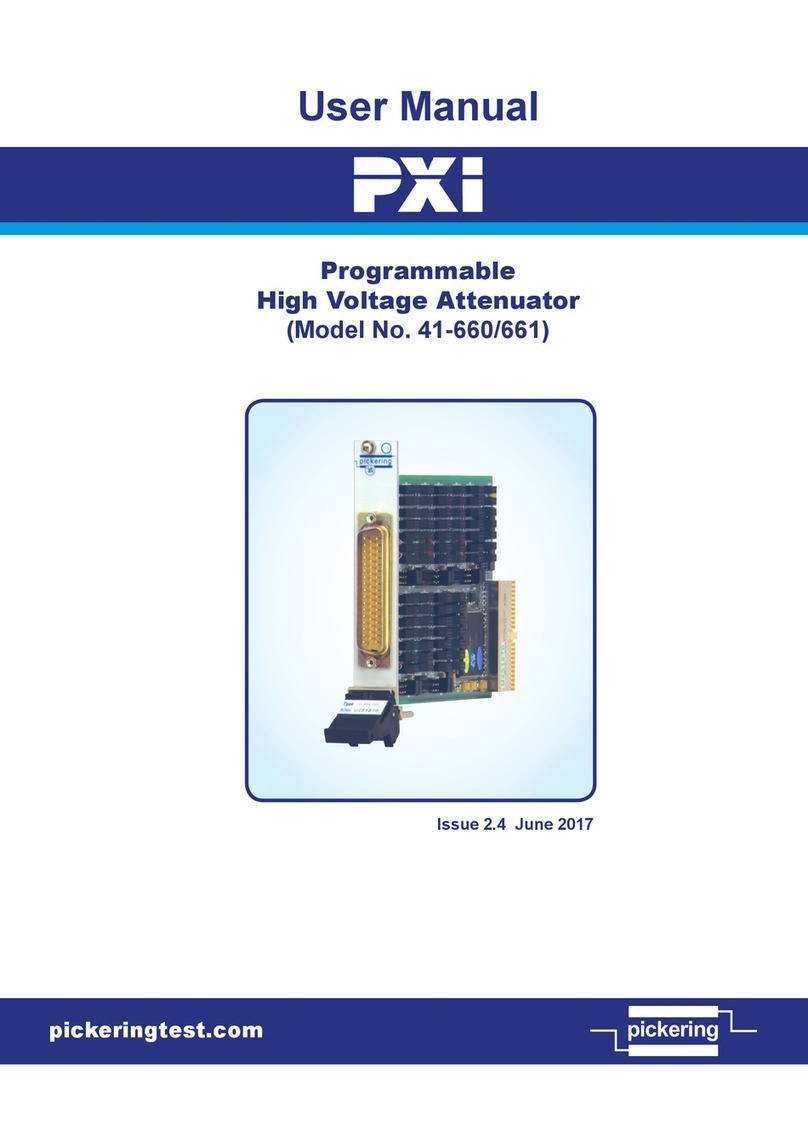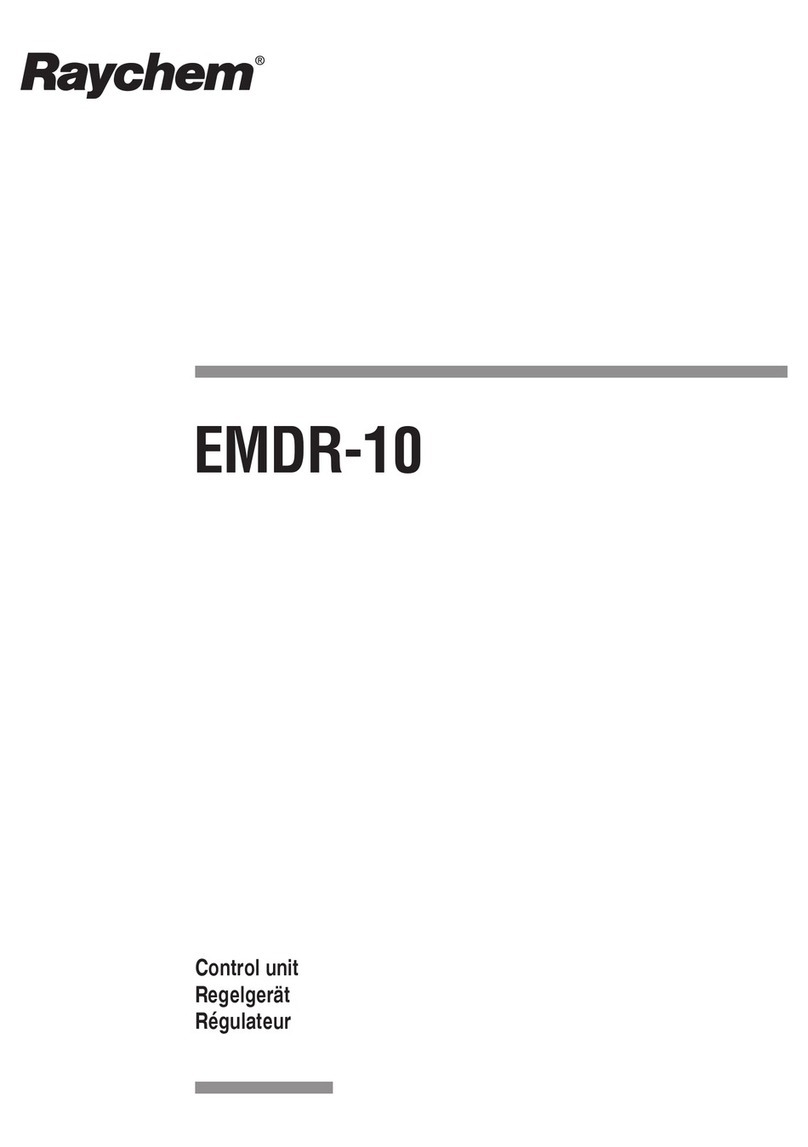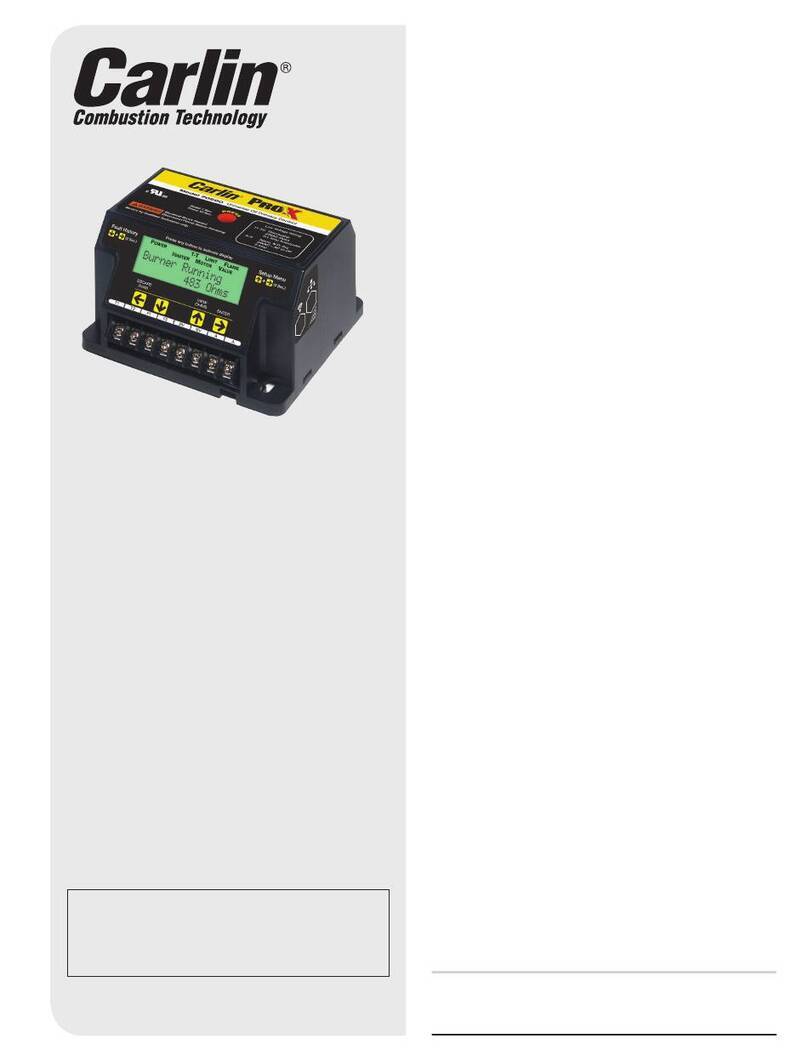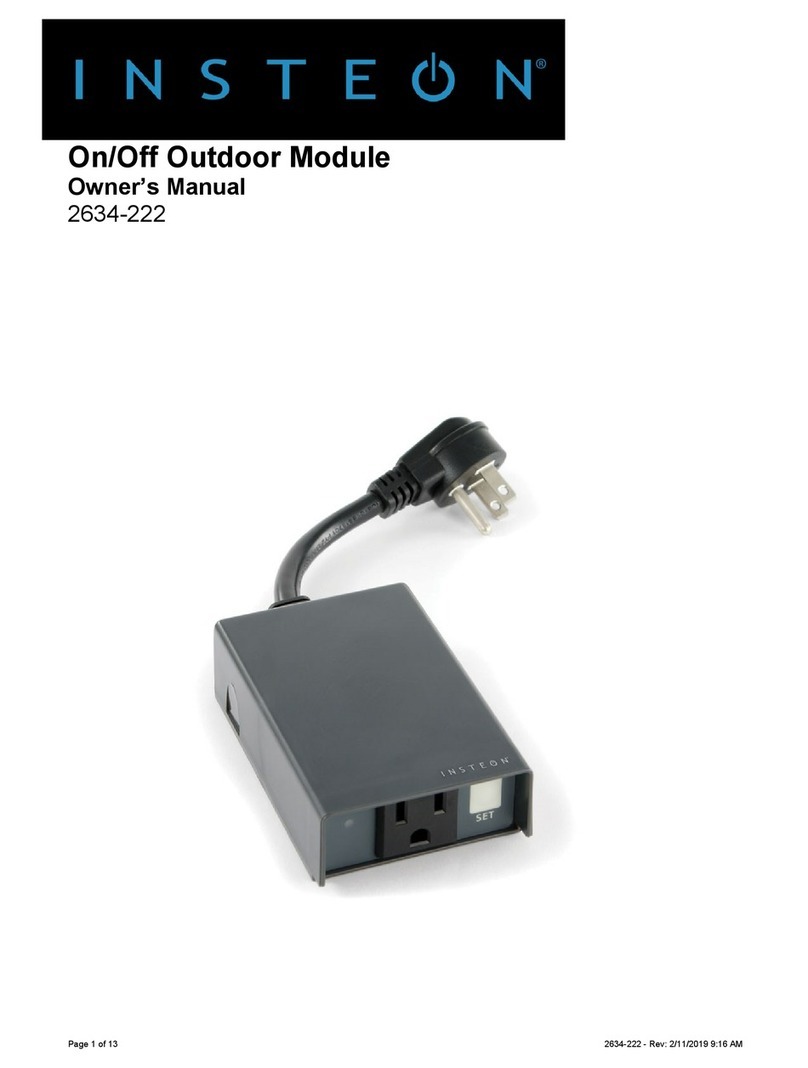Beta LaserMike LASERSPEED 8000 manual

LaserSpeed 8000/9000 I/O Module Instruction Handbook
Part No. 93342 / Drawing No. 0921-01516 Page 2 of 84 Revision E (Dec 2013)
Contents
Proprietary Statement.............................................................................. 3
European Commission Requirements.................................................... 4
Declaration of Conformity ....................................................................... 5
Safety Information.................................................................................... 6
General Safety Information.....................................................................6
Intended Use..........................................................................................6
Introduction.............................................................................................. 7
I/O Module Front Panel...........................................................................7
Installation................................................................................................ 8
Rear Panel Pin-outs................................................................................8
Parallel Outputs....................................................................................16
Parallel Outputs....................................................................................20
Elongation/Synchronization ..................................................................24
Master/Slave I/O Modules.....................................................................24
Synchronization....................................................................................26
Elongation/Differential Speed Calculation.............................................27
Setup........................................................................................................28
Data Format..........................................................................................28
Serial Communications.........................................................................31
I/O Module Configuration Commands...................................................34
I/O Module-to-LaserSpeed Communication..........................................60
Operation.................................................................................................61
Understanding the Front Panel.............................................................61
Profibus Operation................................................................................62
Ethernet Network Operation .................................................................75
Servicing Your Equipment......................................................................79
Returning Equipment for Service..........................................................79
Specifications..........................................................................................80
Stand-alone Dimensions.......................................................................80
Rack Mounting Dimensions..................................................................80
Bottom Mounting Dimensions...............................................................81
General Specifications..........................................................................82
Index.........................................................................................................84

LaserSpeed 8000/9000 I/O Module Instruction Handbook
Proprietary Statement
Part No. 93342 / Drawing No. 0921-01516 Page 3 of 84 Revision E (Dec 2013)
Proprietary Statement
Manufacturer/Distributor
Beta LaserMike, 8001 Technology Blvd., Dayton, OH 45424, USA
About This Manual
This manual contains descriptions, drawings, and specifications for a Beta LaserMike product. Equipment or
products made prior to or subsequent to the publication date of this manual may have parts, features, options,
or configurations that are not covered by this manual. Specifications contained herein are subject to change
by Beta LaserMike without prior notice. Beta LaserMike is not responsible for errors or omissions that may be
contained herein or for incidental or consequential damages in connection with the furnishing or use of this
information.
The information contained in this manual is the property of Beta LaserMike. The information disclosed in this
document is furnished in confidence and upon the condition that individual and corporate intellectual rights,
whether patented or not, will be respected. If this document is supplied on removable media (e.g. CD), an
electronic copy (stored on-site) and one printout is permitted. If this document is supplied in printed form, no
part of this document may be reproduced or scanned without the prior written consent of Beta LaserMike.
This document may not be distributed or circulated to third parties.
Limited Warranty
Beta LaserMike will correct by repair, or at Beta LaserMike‘s option, by replacement, F.O.B Beta LaserMike’s
plant, any defect in workmanship or material in any equipment manufactured by Beta LaserMike which
appears under normal and proper use within twelve months from the date of shipment (eighteen months for
OEM’s), provided Beta LaserMike is given reasonable opportunity to inspect the alleged defective equipment
at the place of its use and under conditions of its use.
EXCLUSIONS: This warranty does not cover products which have been modified, altered, or repaired by any
other party than Beta LaserMike or its authorized agents. Furthermore, any product which has been, or is
suspected of being damaged as a result of negligence, misuse, incorrect handling, servicing, or maintenance;
or has been damaged as a result of excessive current/voltage or temperature; or has had its serial number(s),
any other markings, or parts thereof altered, defaced, or removed will also be excluded from this warranty.
WARRANTY SERVICE AT CUSTOMER SITE: Warranty service performed at the customer’s facility will be
free of charge for parts and labor; however, the customer will be liable for transportation and living expenses
of personnel dispatched to effect such repair. A purchase order or other written confirmation of the
acceptance of these charges, signed by an authorized individual, will be required prior to commencement of
repairs. Additional charges may be assessed the customer if: 1) The equipment is not made available on a
timely basis, 2) The equipment is found to be without fault, and/or 3) It is determined the equipment is not
under warranty, whether by expiration of the warranty or any act which voids the warranty.
OTHER THAN AS SET FORTH HEREIN, BETA LASERMIKE MAKES NO WARRANTIES, EXPRESSED OR
IMPLIED, OF MERCHANTABILITY AS TO THE EQUIPMENT MANUFACTURED BY IT, AND THERE ARE
NO EXPRESSED OR IMPLIED WARRANTIES WHICH EXTEND BEYOND THE DESCRIPTION ON THE
FACE THEREOF. Beta LaserMike’s obligation to correct defects in such equipment by repair or replacement
in accordance with the foregoing provisions is in lieu of any other warranties, expressed or implied, and in no
event shall Beta LaserMike be liable for incidental or consequential damages. No service of Beta LaserMike’s
equipment is permitted during the warranty period without the specific written consent of Beta LaserMike.
Note:
For information
about servicing
and returning
your equipment,
see the section
at the end of this
manual.

LaserSpeed 8000/9000 I/O Module Instruction Handbook
European Commission Requirements
Part No. 93342 / Drawing No. 0921-01516 Page 4 of 84 Revision E (Dec 2013)
European Commission Requirements
This equipment is intended for use in a heavy industrial environment. The equipment generates, uses and
can radiate radio frequency energy and, if not installed and used in accordance with the instructions, may
cause harmful interference to other equipment. There is no guarantee that interference will not occur in a
particular installation. If this equipment does cause harmful interference to other equipment the user is
encouraged to try to correct the interference by one or more of the following measures:
- Re-orientate or relocate the equipment.
- Increase the separation between the pieces of equipment.
- Connect the pieces of equipment on separate mains circuits.
- Ensure that the relevant items of equipment are properly and securely earthed to a common earth point
using adequately sized cable or other means of connection.
Where supplied or specified, shielded interconnection cables must be employed with this equipment to ensure
compliance with the pertinent RF limits. Changes or modifications not expressly approved by the company
could void the user’s authority to operate the equipment.
This product has been rigorously tested to comply with the European EMC (Electromagnetic Compatibility)
Directive. With regard to this, Beta LaserMike recommends that any non-Beta LaserMike peripheral
equipment is CE marked for the Heavy Industrial environment (EN50082-2). Beta LaserMike also
recommends that any cables not supplied by Beta LaserMike, but used for powering Beta LaserMike
equipment, be built using good EMC practices (i.e. cables with braided shield, and connectors with 360
termination of the braid to a metal/metalised shell connector at both ends). If you have any questions
regarding this, contact the Beta LaserMike Service Department.

LaserSpeed 8000/9000 I/O Module Instruction Handbook
Declaration of Conformity
Part No. 93342 / Drawing No. 0921-01516 Page 5 of 84 Revision E (Dec 2013)
Declaration of Conformity

LaserSpeed 8000/9000 I/O Module Instruction Handbook
Safety Information
Part No. 93342 / Drawing No. 0921-01516 Page 6 of 84 Revision E (Dec 2013)
Safety Information
General Safety Information
Under NO circumstances should the earth/ground safety
connections be broken –internal damage to sensitive
electronic components may occur and at worst
electrocution to personnel may result.
The protective conductor terminal symbol is shown to the
right.
This equipment must be earthed/grounded.
Relays and associated wiring are rated for SELV levels i.e.
60 Vdc & 30 vac rms. These levels must not be exceeded.
Maintenance, repairs and electrical connections should be
performed by a suitably qualified person for the country of
installation.
Do not position the equipment so that it is difficult to
operate the disconnecting device.
Intended Use
If the equipment is used in a manner not specified by the manufacturer, the
protection provided by the equipment may be impaired.
Note: If the
equipment is not
used in the
manner specified
by Beta
LaserMike, the
protection
provided by the
equipment may
be impaired.

LaserSpeed 8000/9000 I/O Module Instruction Handbook
Introduction
Part No. 93342 / Drawing No. 0921-01516 Page 7 of 84 Revision E (Dec 2013)
Introduction
The LaserSpeed I/O Module is used to translate the serial output data, Speed,
Length and Gauge Status, from a LaserSpeed 8000 or 9000 Series Gauge to a
parallel output. Optional Profibus and Ethernet field bus are also available in the
I/O Module. The I/O Module connects to the LS9000/LS8000 gauge through a
gauge cable via an RS422 connection, and provides a pass-through connector
for direct access to all the Inputs and Outputs of the LS9000/LS8000 Series
Gauge. A Light Stack connector provides signals to drive a visual indicator (a
light stack) to display the status of the gauge. The I/O Module can also be used
calculate the Elongation Ratio/Differential Speed between two LS8000/LS9000
Series gauges. In addition, the I/O Module can be used to synchronize the
outputs of multiple gauges to output their data at the same time.
I/O Module Front Panel

LaserSpeed 8000/9000 I/O Module Instruction Handbook
Installation
Part No. 93342 / Drawing No. 0921-01516 Page 8 of 84 Revision E (Dec 2013)
Installation
Rear Panel Pin-outs
The following sections describe the various connections to the I/O Module’s rear
panel. Refer to the LS9000/LS8000 Instruction Handbook for further information
about connections to the Gauge.
Power
Accepts IEC 320 power cords. AC power requirements are 90-260VAC,
50/60Hz, 1.5Amps.
I/O Setup
A computer can be connected to this port using a straight-through 9-pin serial
cable for diagnostics and configuration. LaserTrak 4.0 can be used to configure
the LaserSpeed gauge through this port. A NULL modem is not required.
Display
Connects directly to the LaserSpeed I/O Module Display, part number 85871.
This is an LCD indicator that shows the current Length, Velocity, Quality Factor,
and Status.

LaserSpeed 8000/9000 I/O Module Instruction Handbook
Installation
Part No. 93342 / Drawing No. 0921-01516 Page 9 of 84 Revision E (Dec 2013)
Light Stack
Output to drive a light stack. Outputs pull up to +24 volts.
Color
Meaning
Laser Emission?
Green
Laser OFF
No
Yellow
Laser ON, Shutter is CLOSED
No
Red
Laser ON, Shutter is OPEN
Yes
LaserSpeed Gauge
TO GAUGE
37 pin D connector for connection to the LaserSpeed gauge
cable. This connector is compatible with all cables that have
part number 85277.
PASS-THROUGH
Passes signals from the DB25 connector on a
LS9000/LS8000. The pinout of this connector is compatible
with 25-pin LaserSpeed breakout boxes. Signal descriptions
are listed in a table below.
ETHERNET
Pass-through connector for the LS9000/LS8000 gauge’s
optional Ethernet connection that provides a direct
connection to the gauge over Ethernet. If the attached
gauge does not have the Ethernet option installed, then this
connector is not used.
RS-232
Pass-through connector for the LS9000/LS8000 gauge’s RS-
232 serial port. This connector can be connected to a PC
using a straight-through DB9 serial cable. LaserTrak or a
terminal program can be used to communicate directly with
the gauge via this serial port.

LaserSpeed 8000/9000 I/O Module Instruction Handbook
Installation
Part No. 93342 / Drawing No. 0921-01516 Page 10 of 84 Revision E (Dec 2013)
SYNC IN and OUT connector
Used to connect multiple I/O modules together for gauge-gauge synchronization,
and Elongation/Differential Speed calculation. The Sync Out connector of one
I/O module connects to the Sync In connector of the next I/O Module with a
straight-through RJ-45 cable.
IN
Connects to the Master I/O module.
OUT
Connects to SYNC IN of the next I/O Module in the Daisy Chain.
Parallel Outputs
STATUS
Parallel Output for Status / Interlock Control / Shutter Control
VELOCITY
Parallel output for Velocity
LENGTH/ELONGATION
Parallel output for Length or Elongation Ratio
The LENGTH/ELONGATION port can output either Length or the Elongation
Ratio between two gauges, depending on the I/O Module’s position in the
system. All I/O Modules except for the last I/O module in the Daisy Chain
calculate the Elongation Ratio or Differential Speed. The last I/O module in the
Daisy Chain always outputs Length on the Length/Elongation port. All other I/O
Modules output Elongation Ratio if the port is configured for Auto-Elongation
Mode. The ~I:Elongation command is used to configure this mode. By default,
the ~I:Elongation setting should be set to 1 on all I/O Modules. This will cause
the I/O Module to automatically output Elongation if it is being calculated. See
the Elongation/Synchronization section for more information about Elongation.
Note: Elongation Ratio will only be calculated when two gauges are synchronized
together by connecting the Sync Out of one I/O Module to the Sync In of the
other I/O Modules.
unconnected
Middle
Slave Middle
Slave Last
Slave
Master
to sensor
I/O Module
to Master to Slave
unconnected
I/O Module
to Master to Slave
I/O Module
to Master to Slave
I/O Module
to Master to Slave
INOUT INOUT INOUT

LaserSpeed 8000/9000 I/O Module Instruction Handbook
Installation
Part No. 93342 / Drawing No. 0921-01516 Page 11 of 84 Revision E (Dec 2013)
Connections
Connect the LaserSpeed 8000/9000 to the TO GAUGE input using the supplied
cable.
Status pins 17, 18, and 26 and 19, 27, and 30 must be connected as shown for
the gauge to operate. An interlock shunt connector is supplied with the interlock
connections pre-wired. Beta LaserMike recommends that you use the supplied
key switch to operate the Laser Interlock. This will provide you with a laser
shutoff for maintenance or material changes.
Pin 18 = Laser Interlock (+)
Pin 19 = Laser Interlock (-)
Pin 26 = Shutter Interlock (+)
Pin 27 = Shutter Interlock (-)
+5-24VDC
Ground
+5-24VDC
Ground
1819
2627
17
30
Pin 17=+5V
18=Laser+
19=Laser-
26=Shutter+
27=Shutter-
30=Ground
Pin
Pin
Pin
Pin
Pin
Note: The Setup
section of this
manual will help
you configure the
I/O Module with
the LaserSpeed
Gauge. Use the
LaserTrak
software to setup
the LaserSpeed
Gauge itself.

LaserSpeed 8000/9000 I/O Module Instruction Handbook
Installation
Part No. 93342 / Drawing No. 0921-01516 Page 12 of 84 Revision E (Dec 2013)
Pass-through Connector Pinout
Male 25-Pin D-Subminiature
Pin
Pin Description
1
RS232 Transmit (From Gauge to User)
2
RS232 Receive (From User to Gauge)
3
Phase A True –Fixed Output
4
Phase A False –User Selectable
5
Phase A False –Fixed Output
6
Phase B True –User Selectable
7
Phase B True –Fixed Output
8
Phase B False –User Selectable
9
Phase B False –Fixed Output
10
Material Present Input
11
Signal Ground for Inputs/Outputs/Serial
12
No Connection
13
No Connection
14
Measurement Direction Input
15
Phase A True –User Selectable
16
No Connection
17
No Connection
18
Length Reset 1
19
Signal Ground for Inputs/Outputs/Serial
20
User Vin: Voltage Input for Isolated Pulse Outputs (5 to 28 V DC). The
voltage supplied will be the voltage level of the pulse outputs supplied by
the LS4000-1. If a Voltage is not supplied, the pulse outputs will be TTL
level, or 3.7 volts minimum. Because this voltage input is isolated from
the power input, it must be references to one of the Signal Ground pins.
For example, if you want the pulse outputs to be 12 V outputs, use a 12
V power supply by connecting the positive terminal to pin 20 and the
ground terminal pin to pin 11, 19, or 21.
21
Signal Ground for Inputs/Outputs/Serial
22
Index (Printer) Pulse True
23
Index (Printer) Pulse False
24
+24V Power Input (Fused)
25
+24V Power Input (Fused)

LaserSpeed 8000/9000 I/O Module Instruction Handbook
Installation
Part No. 93342 / Drawing No. 0921-01516 Page 13 of 84 Revision E (Dec 2013)
Gauge Connector Pinout
Female 37-Pin D-Subminiature
The Gauge connector is connected to the LS9000/LS8000.
Pin
Pin Description
1
RS232 Transmit (From Gauge to User)
2
RS232 Receive (From User to gauge)
3
Phase A True –High Speed output
4
Phase A False –User Selectable
5
Phase A False –High Speed Output
6
Phase B True –User Selectable
7
Phase B True –Highs Speed Output
8
Phase B False –User Selectable
9
Phase B False High Speed Output
10
Measurement Hold Input, can be activated by I/O Module
11
Signal Ground for Inputs/Outputs/Serial
12
Power Ground for 24V
13
Power Ground for 24V
14
Measurement Direction Input 1
15
Phase A True –User Selectable
16
Laser Interlock
17
Shutter control
18
Length Reset 1, can be activated by I/O Module
19
Signal Ground for Inputs/Outputs/Serial
20
User Vin: Voltage Input for Isolated Pulse Outputs (5 to 28 V DC). The
voltage supplied will be the voltage level of the pulse outputs supplied by
the LS4000-1. If a Voltage is not supplied, the pulse outputs will be TTL
level, or 3.7 volts minimum. Because this voltage input is isolated from the
power input, it must be references to one of the Signal Ground pins. For
example, if you want the pulse outputs to be 12 V outputs, use a 12 V
power supply by connecting the positive terminal to pin 20 and the ground
terminal pin to pin 11, 19, or 21.
21
Signal Ground for Inputs/Outputs/Serial
22
Index (Printer) Pulse True
23
Index (Printer) Pulse False
24
+24V Power Output (Fused)
25
+24V Power Output (Fused)
26
RS422 Transmit +
27
RS422 Transmit -

LaserSpeed 8000/9000 I/O Module Instruction Handbook
Installation
Part No. 93342 / Drawing No. 0921-01516 Page 14 of 84 Revision E (Dec 2013)
28
RS422 Receive +
29
RS422 Receive -
30
Ana log Output voltage
31
Signal ground
32
Core sync input+
33
Core sync input-
34
Ethernet tx+
35
Ethernet rx-
36
Ethernet tx-
27
Ethernet rx-
Note 1: User Input requiring 5 to 28 V to activate.
General Note: The Laser Interlock is in series with the front panel switch.
Gauge RS-232 Connector
Female 9-Pin D-Subminiature
1
NC
2
RS232 Xmit from gauge
3
RS232 Rec to gauge
4
NC
5
Signal ground
I/O Setup Connector
Female 9-Pin D-Subminiature
1
NC
2
RS232 Xmit from I/O module
3
RS232 Rec to I/O module
4
NC
5
Signal ground

LaserSpeed 8000/9000 I/O Module Instruction Handbook
Installation
Part No. 93342 / Drawing No. 0921-01516 Page 15 of 84 Revision E (Dec 2013)
Light Stack Connector Pinout
Female 9-Pin D-Subminiature
1
Pulled up to 24 volts for red light stack
2
Pulled up to 24 volts for yellow light stack
3
Pulled up to 24 volts for green light stack
4
+24 volts
5
24 volts ground
6
+24 volts
7
Reserved –Do Not Connect
8
Reserved –Do Not Connect
9
NC
Notes:
Pin 1 (or Red on the Light Stack) is active when the Status Input from the
LS9000/LS8000 shows power is being sent to the laser and that the
Shutter is open.
Pin 2 (or Yellow on the Light Stack) is active when the Status Input from
the LS9000/LS8000 shows power is being sent to the laser and the
shutter is closed.
Pin 3 (or Green on the Light Stack) is active when there is no power
being sent to the laser.
Pin 4 and 6 are 24 volts at 1 amp for the Light Stack.
Pin 5 is signal ground.
When the red and yellow lamps flash alternately, this indicates that there are no
communications from the LaserSpeed gauge.

LaserSpeed 8000/9000 I/O Module Instruction Handbook
Installation
Part No. 93342 / Drawing No. 0921-01516 Page 16 of 84 Revision E (Dec 2013)
Parallel Outputs
There are three, 37-pin D-Subminiature, Parallel output ports:
Parallel Port
Description
Status
Outputs the system status and accepts control inputs
Length/Elongation
Outputs either Length from the gauge or Elongation
Ratio that is Calculated in the I/O Module.
Speed
Outputs the Velocity measurement from the gauge
Status Signals
Status Signals (pins numbered 1–16) are generated as solid state closures. The
contacts close when the condition is true. The contact maximum voltage and
current ratings are: 200mA at 30 VAC/VDC for resistive loads.
System input signals (pins numbered 20–31) are optically-isolated input signals
between 5VDC and 30VDC. The input should be applied to the INPUT+ pin, and
ground should be applied to the INPUT–pin for each signal used. Refer to the
following table pin-out information.

LaserSpeed 8000/9000 I/O Module Instruction Handbook
Installation
Part No. 93342 / Drawing No. 0921-01516 Page 17 of 84 Revision E (Dec 2013)
Pin Assignment for System Status
Pin
Signal Name
I/O
Description
1
Material Present+
Output+
Contact Closure Output indicating the Material Present
state.
Closed = Material is Present
Open = Material is Not Present
2
Material Present-
Output-
3
Valid Measurement+
Output+
Contact Closure Output indicating when the LaserSpeed
gauge is making valid measurements
Closed = LaserSpeed gauge is Measuring
Open = LaserSpeed gauge is Not Measuring
4
Valid Measurement –
Output-
5
System Ready +
Output+
Contact Closure Output indicating if the system is ready
to measure. This output is closed when the Laser is ON,
the Shutter is Open, and the Laser is at the correct
temperature.
Closed = System is Ready to Measure
Open = System is Not Ready to Measure
6
System Ready –
Output-
7
Laser Power +
Output+
Contact Closure Output indicating if the Laser Power is
on.
Closed = Laser is ON
Open = Laser is OFF
8
Laser Power –
Output-
9
Reserved
Output+
Reserved Contact Closure Output
Do Not Connect
10
Reserved
Output-
11
Laser Temperature+
Output+
Contact Closure Output indicating if the Laser is at the
correct temperature.
Closed = Laser Temperature is Ok
Open = Laser Temperature is not within tolerance
12
Laser Temperature –
Output-
13
Laser Operational+
Output+
Laser is Operational: Shutter Open + Laser Power
Closed = Laser is Operational (Laser emission)
Open = Laser is not Operational (no Laser emission)
14
Laser Operational –
Output-
15
Comm Error +
Output+
Contact Closure Output indicating if the I/O Module is
communicating with the LaserSpeed gauge.
Closed = Communication Ok
Open = Not Communicating
16
Comm Error –
Output-
17
+5 volts (fused, 1A)
Output
+5VDC Output for connection to interlock signals when
wiring as contact closure Inputs.
18
Laser Interlock+
Input+
Laser Interlock input to LS9000/LS8000. See
connection diagram for wiring instructions. See also note
at end of table.
19
Laser Interlock-
Input-
20
Reserved
Input+
Do not use
21
Reserved
Input-

LaserSpeed 8000/9000 I/O Module Instruction Handbook
Installation
Part No. 93342 / Drawing No. 0921-01516 Page 18 of 84 Revision E (Dec 2013)
22
External Material
Present +
Input+
The External Material Present input is used to control
when the gauge will measure. The gauge will measure
when External Material Present is active and will not
measure when External Material Present is not active.
External Material Present is enabled and disabled via
serial commands for the gauge. See Serial Commands
listing in the gauge manual.
23
External Material
Present –
Input-
24
Reserved
Input+
Do not use
25
Reserved
Input-
26
Shutter +
Input+
Shutter Control Input to LS9000/LS8000. See
connection diagram for wiring instructions
27
Shutter -
Input-
28
Reserved
N/C
Do not use
29
Reserved
NC
30
GND
Ground
Ground for connection of I/O Signals
31
Reserved
Do not use
32
Elongation Analog
Output
Elongation Ratio Analog Output. Minimum and
Maximum are configurable. An output of 0V
corresponds to the Minimum Elongation, and an output
of 2.048V corresponds to the Maximum Elongation.
33
GND
Elongation Analog Output ground
34
Velocity Analog
Output
Velocity Analog Output. Minimum and Maximum are
configurable. An output of 0V corresponds to the
Minimum Velocity, and an output of 2.048V corresponds
to the Maximum Velocity.
35
GND
Velocity analog Output ground
36
Quality Factor
Analog
Output
Quality Factor Analog Output –voltage output changes
linearly from Quality Factor 0 to Quality Factor 15.
0 = 0 Quality Factor
2.048V = 15 Quality Factor
37
GND
Quality Factor Analog Output ground
Note: The Laser interlock (Pins 18, 19) on the Status Port is in series with the
front panel Key Switch. The Key Switch and Pins 18 and 19 must be activated to
turn on the Laser.
External Material Present (MP)
This is an input to the bi-directional System Status port. This input is functional
only when the gauge is configured for External Material Present. When this
mode is at a Logic Low (or No Input), measurements are enabled. When this
input is at a Logic High (5 –30 volts), measurements are disabled.

LaserSpeed 8000/9000 I/O Module Instruction Handbook
Installation
Part No. 93342 / Drawing No. 0921-01516 Page 19 of 84 Revision E (Dec 2013)
Analog Outputs
Pins 32-37 of the SYSTEM STATUS port are used for various analog outputs.
Every I/O Module contains three analog outputs.
Elongation Analog Output –only used when using multiple I/O modules
are configured for Synchronization.
Velocity Analog Output
Quality Factor Analog Output
All analog outputs are non-isolated. You may set the scaling of the elongation
and speed outputs to fit your application. See the Serial Commands section.

LaserSpeed 8000/9000 I/O Module Instruction Handbook
Installation
Part No. 93342 / Drawing No. 0921-01516 Page 20 of 84 Revision E (Dec 2013)
Parallel Outputs
Data is updated to the bus in one of two modes. The first is called "Data Ready"
mode and the other is called "Data Request" mode. In "Data Ready" mode, the
system will automatically update the data on the Parallel Output Bus each User
Update Period. In "Data Request" mode, the system will update the data on the
Parallel Output Bus only when a Data Requested Signal is received on the Data
Request Input Pin. There are Data Request Input Pins on the Parallel Length/
Elongation port and the Parallel Velocity port. The data output mode is
configured by ~I:AckMode serial command:
Command
Parallel Port Mode
~I:AckMode=0
Data Ready Mode
~I:AckMode=1
Data Request Mode
Data Ready Mode
In Data Ready mode, the I/O module outputs data each time a new measurement
is received from the LaserSpeed gauge. An optically isolated signal called "Data
Ready," located on the Length/Elongation and the Velocity Output connectors,
are provided to indicate when data has been upated and is valid. The Data
Ready pulse indicates that the data bus has been updated with new data and that
the signals on the bus are completely settled. Both Data Ready True (Rising
Edge Trigger, signal driven from ground to Voltage high) and Data Ready False
(Falling Edge Trigger, signal driven from Voltage high to ground) are provided.
When using Data Ready True, data should be read from the bus on the rising
edge of the signal, and when using Data Ready False, data should be read on
the falling edge. Either the leading edge or the active level of the signal can be
used to trigger a read by your interface.
Ringing on the line can occur if the cable is not properly terminated. This can
cause the data to be unstable during the time of the active edge of the data ready
signal. Allow for extra settling time if ringing occurs.
Signal
Activity
Data Valid On:
Data Ready (True)
Active High
Rising Edge
Data Ready (False)
Active Low
Falling Edge
Data is valid from the time that the Data Ready signal is asserted until the time
that the next data point is received from the gauge. This time varies depending
on the gauge’s Update Rate configuration setting. See the timing specifications
below for detailed timing information.
This manual suits for next models
1
Table of contents

